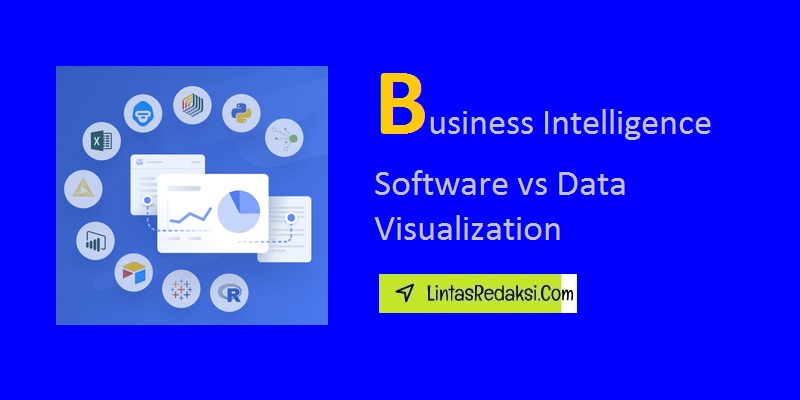Business Intelligence Software vs Data Visualization – When it comes to navigating the complex landscape of data analysis tools, understanding the distinctions between business intelligence (BI) software and data visualization is crucial. Both play integral roles in helping organizations make informed decisions based on data-driven insights. This article aims to delve into the nuances of BI software versus data visualization, shedding light on their unique functionalities and applications.
Daftar Isi
Business Intelligence Software vs Data Visualization: Understanding the Key Differences
In the realm of data analysis, two pivotal tools stand out: Business Intelligence (BI) software and Data Visualization. Each serves a distinct purpose and offers unique benefits, but what sets them apart? Let’s delve into the contrasting features of BI software and data visualization to understand their roles in unraveling complex datasets.
Unveiling Business Intelligence Software
Business intelligence software is a robust tool designed to ingest, process, and analyze vast amounts of data from various sources. It empowers users to uncover trends, patterns, and correlations within datasets, enabling informed decision-making. BI software offers features such as data querying, reporting, and predictive analytics, providing a comprehensive view of an organization’s performance.
BI software empowers organizations to extract valuable insights from vast datasets by consolidating information from various sources into actionable reports and dashboards. With BI software, decision-makers can gain a comprehensive view of their operations, enabling strategic planning and data-driven decision-making.
The Power of BI Software
BI software acts as a compass, guiding organizations through the intricate maze of data to extract meaningful insights. By leveraging advanced algorithms and machine learning capabilities, BI software helps in identifying key performance indicators, predicting future trends, and optimizing operational processes for enhanced efficiency.
The true potential of data analysis lies in the synergy between BI software and data visualization. BI software processes and analyzes data, while data visualization translates these insights into interactive visuals, fostering a holistic understanding of the underlying data. Together, they form a powerful duo that drives informed decision-making and strategic planning.
Key Benefits of BI Software
- Streamlined Data Analysis
- Enhanced Decision-Making
- Real-Time Monitoring
- Scalability and Flexibility
Decoding Data Visualization
Data visualization, on the other hand, focuses on representing data in visual formats such as charts, graphs, and dashboards. Its primary goal is to communicate complex information in a clear and concise manner, making it easier for stakeholders to grasp insights at a glance. Data visualization tools enable users to create compelling visualizations that highlight trends, outliers, and patterns within datasets.
On the other hand, data visualization focuses on transforming raw data into visually appealing charts, graphs, and infographics. By representing information in a digestible format, data visualization enhances understanding and facilitates quick analysis. It simplifies complex datasets, making patterns and trends more accessible to a broader audience.
The Impact of Data Visualization
Data visualization serves as a storyteller, painting a vivid picture of data trends and relationships. By transforming raw data into intuitive visuals, data visualization tools facilitate rapid understanding and interpretation of complex datasets, fostering data-driven decision-making across organizations.
While BI software provides in-depth analysis and detailed insights, data visualization excels in presenting information in a visually compelling manner. BI software offers complex querying capabilities, predictive analytics, and ad-hoc reporting functionalities, whereas data visualization emphasizes intuitive data representation for easier interpretation.
Key Advantages of Data Visualization
- Enhanced Data Interpretation
- Improved Data Communication
- Increased Engagement
- Accessibility and Usability
Bridging the Gap: BI Software and Data Visualization
While BI software and data visualization serve distinct purposes, they often complement each other in data analysis workflows. BI software provides the analytical backbone, processing data and generating insights, while data visualization tools offer a compelling medium to present these insights in a visually appealing manner. Together, they form a powerful alliance that empowers organizations to extract actionable intelligence from their data assets.
Conclusion
Understanding the differences between Business Intelligence Software and Data Visualization is essential for harnessing the full potential of data-driven decision-making. By leveraging the strengths of both tools, organizations can gain deeper insights, drive strategic initiatives, and stay ahead in today’s data-driven business landscape.
Read Also: Business Intelligence Software Big Data
BI software and data visualization are complementary tools that play distinct yet interconnected roles in the realm of data analysis. While BI software uncovers hidden insights and trends, data visualization communicates these findings effectively through visual storytelling. By leveraging the strengths of both tools, organizations can harness the full potential of their data to drive success and innovation.



